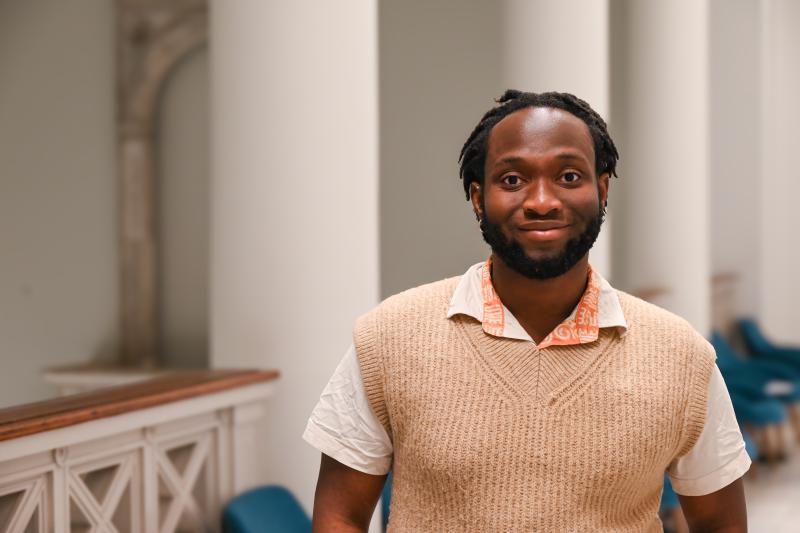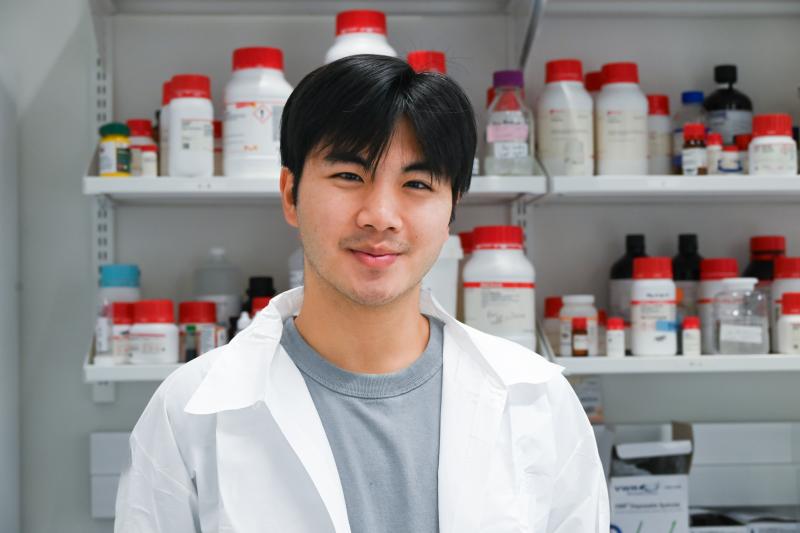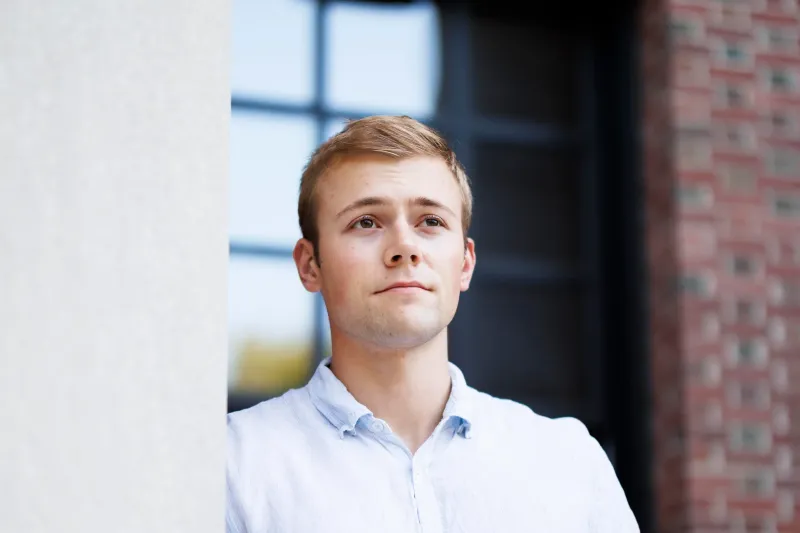
Thesis Spotlight: Innovating for a Sustainable Tomorrow
Madison and Aeden, Environmental Science and Engineering
Fluidic Window Prototype for 3-Dimensional Radiative Control
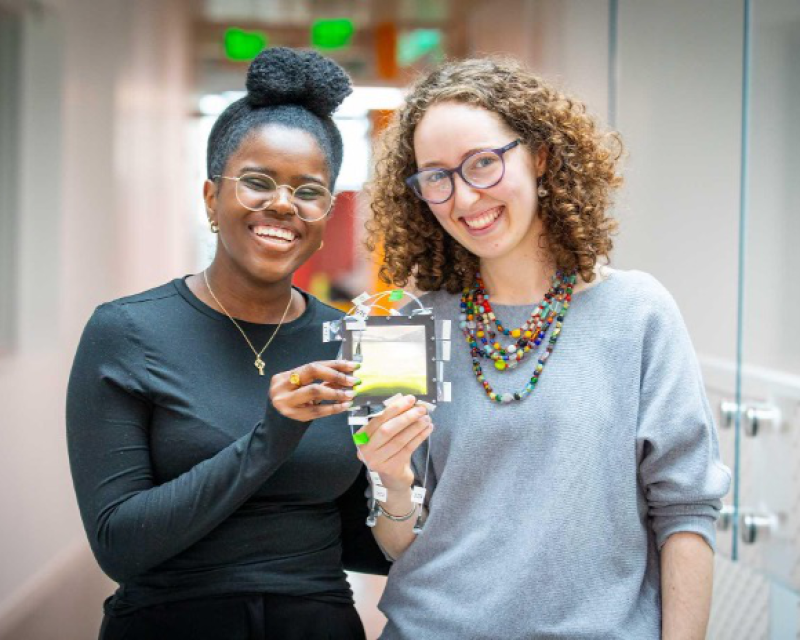
Determined to bring sustainable design into the mainstream, Aeden and Madison set out to prove that small innovations can drive big change in global energy use. Their thesis project—a resourcefully engineered quad-pane window—uses layers of specialized liquids to control the flow of light and heat, significantly boosting insulation and energy efficiency in buildings. In regions where both summer cooling and winter heating are essential, this fluid-based system could reduce energy consumption by up to 50% compared to traditional double-pane windows.
Rooted in personal motivation, their partnership blends two complementary perspectives. Madison, who grew up surrounded by the natural beauty of Arkansas, has always loved working with her hands. Aeden, driven by the human impact of pollution, is focused on applying science to environmental solutions. When tasked with building a device from scratch, they reached beyond a prototype—they brought a theoretical idea to life. They credit their advisor, Raphael Kay, the Aizenberg Lab, Bryan Yoon, and a strong network of friends for supporting them throughout the process.
Their 4x4-inch proof-of-concept window uses polyethylene and specially formulated liquids to dynamically modulate visible, near-infrared, and mid-infrared light. By adjusting the optical properties of the liquids, the window can independently manage how heat and light enter or leave a space, creating an elegant, passive approach to smarter building energy use.
Aeden and Madison hope their project lays the foundation for future innovation. “We hope that this work will not only bring sustainable design to mainstream technology but also inspire others to consider how small innovations can support global energy goals to mitigate the climate crisis,” they said.
With continued development, they believe this technology could one day be implemented in real-world buildings, providing a scalable and affordable tool in the global effort to reduce energy demand.
After graduation, Madison plans to take her passion for sustainable problem-solving into the design industry, while Aeden will focus on advancing clean water infrastructure.
Zora, Environmental Science and Engineering, and Bella, Electrical Engineering
SNIFFIT: Sensory Nature Inspired Fact Finder of Indoor Toxins
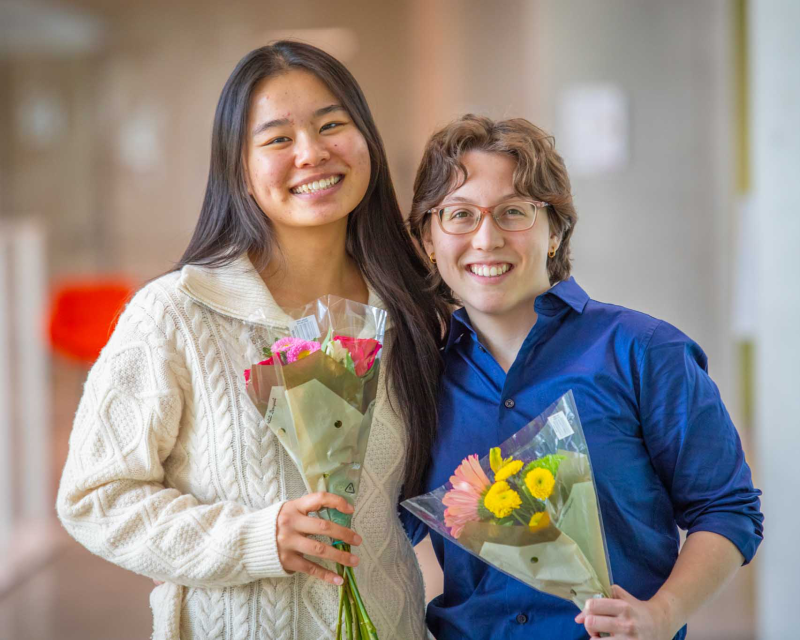
Working at the intersection of environmental health and bio-inspired design, Zora and Bella set out to address a critical gap: the lack of affordable, precise tools to monitor air quality in nail salons. Their joint thesis centers on a sensing device that utilizes metal oxide semiconductor technology and machine learning to identify volatile organic compounds (VOCs), even at low concentrations, which are often missed by existing tools.
In more industrial settings, sensors are better able to differentiate between specific chemicals and their concentrations; however, their high cost makes them inaccessible. The indoor air quality sensors available for non-industrial spaces⏤such as nail salons⏤typically use total VOC sensors, which are often inaccurate.
“Our current technology measures total VOC present and therefore has potential for misinterpreting harmless VOC in high concentrations and bypassing harmful VOC in low concentrations. It doesn’t delineate between these compounds; thus, patrons are misinformed about their true exposure in these environments,” Bella said.
Nail salon workers, primarily women of childbearing age, are regularly exposed to airborne chemicals without adequate monitoring. Recognizing this gap, the duo focused on advancing electronic nose (E-nose) technology—systems that combine arrays of chemical sensors with pattern recognition algorithms to classify airborne compounds.
Their prototype features an array of eight VOC sensors, each calibrated to detect different chemical classes. When VOCs interact with the sensor’s metal surface, changes in resistance are measured and analyzed to predict chemical concentrations. Machine learning optimizes the system’s ability to classify these compounds with greater precision than standard total VOC sensors, which can’t distinguish between benign and harmful exposures.
The project also outlines plans for a companion app to visualize air quality data, track trends over time, and send ventilation alerts when necessary, turning passive monitoring into actionable insight. Improving airflow and ventilation in salons is a crucial aspect of reducing health risks in these environments.
Zora and Bella’s work highlights how accessible, targeted technologies can address overlooked public health needs. They credit the Aizenberg Lab and advisors Haritosh Patel and Anna Shneidman, as well as the faculty and friends who supported their research journey.
Devinder, Environmental Science & Engineering, Economics
Mechanistic Insights into the Time Dependence of Molten Salt Corrosion and Mitigation Strategies for Various Alloys: Evidence from Static Experiments at Mantel Capture

Devinder’s commitment to working on climate solutions began after experiencing a devastating tornado and flood near his high school in Ontario, Canada. Those early encounters with environmental disasters shaped his studies at Harvard, where he focused on the intersection of engineering and economics to explore scalable, cost-effective technologies for carbon capture, one of the most urgent fronts in reducing global greenhouse gas emissions.
His academic work bridges the gap between theory and application across disciplines. For his Economics thesis, Devinder investigated how wildfires affect nearby property values, drawing on his own experience fighting wildfires in British Columbia the previous summer. His Engineering thesis, meanwhile, delved into the complex challenge of corrosion in molten salt-based carbon capture systems.
“Don’t be afraid to take an unconventional path,” he said—a philosophy shaped by his time firefighting and his commitment to solving one of climate tech’s most difficult problems.
Devinder’s engineering work evolved from his role at Mantel Capture, a startup he joined in the fall of his junior year that focuses on point-source carbon capture—removing CO₂ emissions directly from industrial or power plant exhaust before they reach the atmosphere. This approach is more thermodynamically and economically efficient than direct air capture, which must extract CO₂ from much lower concentrations in ambient air. Mantel’s innovation centers on the use of molten salts to absorb CO₂ at high temperatures, a method that not only captures carbon effectively but also recovers heat generated in the process, reducing energy losses by more than 60%. However, the harsh chemical environment of molten salts poses a significant challenge: corrosion of the metal pipes and components that contain and transport them.
For his thesis, Devinder sought to understand how corrosion develops over time in molten salt systems, with the aim of making carbon capture equipment safer and more durable. He tested three main strategies to slow the process. One involved pre-loading the salt with corrosion byproducts to skip over the most damaging early stage. Another used thin metal coatings, such as nickel, to protect the equipment’s surface. The third added strong chemical reducers to cancel out oxidizing agents in the salt. Two of these strategies demonstrated promise and suggested practical approaches to enhance the durability and cost-effectiveness of these high-temperature systems.
After graduation, he’ll join Mantel full-time, with his first assignment taking him back to Canada to help commercialize the technology at a paper mill in Québec. For Devinder, it’s a fitting return to where his climate journey began—and a step toward making the solutions he’s studied a reality.


